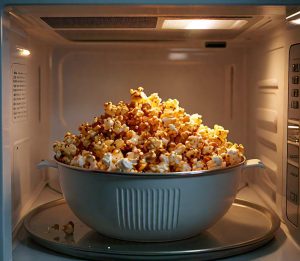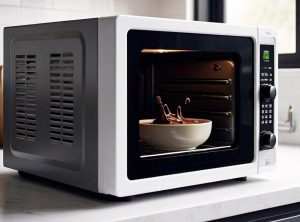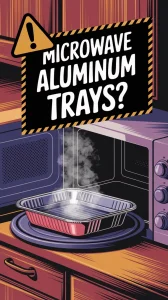A plastic bowl is a type of container typically used for holding and serving various types of food or liquids.
The main question that this article will address is whether or not you can put a plastic bowl in the microwave.
The forthcoming information will delve into details about the plastic bowl, including its suitability for microwaving. If it’s permissible to microwave it, we’ll discuss how long you should do so without causing harm to both the bowl and potentially your health due to chemical leakage. If microwaving isn’t advisable, we’ll explore alternative ways of heating up contents within a plastic bowl along with providing safety tips and precautions when dealing with such items in relation to heating methods. Apart from these essential discussions, expect FAQs around this topic and our conclusive thoughts on the matter.
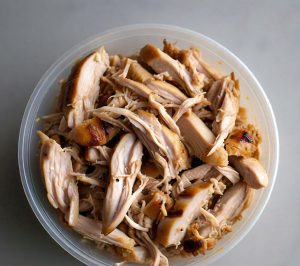
Jump To:
Can You Put a Plastic Bowl in the Microwave?
Yes, you can put a plastic bowl in the microwave. However, it is important to ensure that the plastic bowl is labelled as microwave-safe. This means it won’t release harmful chemicals during heating. Conversely, avoid using any other kitchenware of similar type like non-microwave safe plastics for microwaving purposes due to the health hazards they pose.
Facts About Microwaving Plastic Bowl
Here, we will discuss the important things to note about microwaving a plastic bowl.
- Type of plastic: Not all plastics are microwave-safe. Only use bowls marked as microwave-safe.
- Melting point: Plastics have different melting points. Exposure to high temperatures can cause some plastics to melt in the microwave.
- BPA: Some plastic bowls may contain BPA (Bisphenol A), which could potentially leach into food when heated.
- Toxic fumes: Heating non-microwaveable plastic bowls can release toxic fumes, making them harmful for consumption and the environment.
- Degradation: Over time, repeated microwaving might cause the material of the bowl to degrade causing chemicals leaching into food or drink.
In conclusion, while you can put certain types of plastic bowls in a microwave, it’s critical that they’re clearly labeled as “microwave safe.” Now we will discuss some other things about microwaving a plastic bowl.
Check out if you can microwave a plastic plate.
How Long Can You Microwave a Plastic Bowl?
The duration to safely microwave a plastic bowl largely depends on the type of plastic and the heat setting. However, in general terms, it is safe to microwave a designated microwave-safe plastic bowl for about 1-3 minutes at medium power. It’s important not to overheat as it could cause deformation or damage to the bowl. On higher power settings, monitor closely every 30 seconds.
Does Heating a Plastic Bowl in the Microwave Damage it? Does This Affect Food?
In regards to non-food items like plastic bowls, microwaving can potentially cause harm if they’re not marked as “microwave-safe.” When heated excessively, certain types of plastics may release harmful chemicals or melt – altering their structure and possibly contaminating your food with toxic substances. Therefore, using only certified ‘microwave-safe’ plastics ensures both your safety and that of your dishes.
Check out if you can microwave a plastic container.
Does Heating a Plastic Bowl in the Microwave Affect Flavors?
Microwaving food inside a properly approved ‘microwave-safe’ plastic container should not alter its taste or aroma significantly. However, there’s always potential for subtle flavor changes when any form of cooking method is used. If you suspect an unpleasant change in flavor due to reheating within such containers – consider using glassware or ceramics which are universally ideal options for microwaving.
To sum up our discussion so far: Microwaving times vary depending upon material and heat settings; some plastics can release harmful chemicals when heated while others don’t alter taste notably if properly approved – each item needs careful handling during use under different conditions.
Now we will discuss FAQs related specifically to this topic further down below.
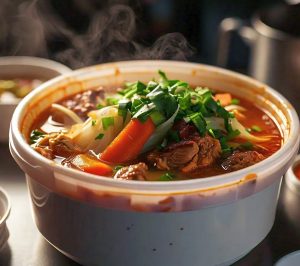
Frequently Asked Questions (FAQs)
In this section, we will now look at the most commonly asked questions related to microwaving and heating.
Can you put a plastic bowl in the microwave?
Yes, you can put a plastic bowl in the microwave. However, it’s important that the bowl is labeled as “microwave-safe”. This indicates that the plastic won’t melt or release harmful chemicals when heated. Bowls not marked as such could potentially warp or emit hazardous substances under high temperatures experienced inside a microwave.
Is it safe to heat food in a styrofoam container inside the microwave?
No, it’s not safe to heat food in a styrofoam container inside the microwave. When subjected to high temperatures, styrofoam can release toxic chemicals into your food and may melt, causing both health risks and potential damage to your appliance.
Can ceramic bowls be used safely in the microwave?
Yes, ceramic bowls can be used safely in the microwave if they are labeled as microwave-safe. Both glazed and unglazed ceramics deemed ‘microwave-safe’ will withstand typical microwaving without cracking due to thermal shock or releasing unwanted compounds into your meal.
Are glass containers suitable for microwaving?
Absolutely! Glass containers are generally suitable for microwaving unless they contain metallic paint or trim which could spark up. It’s always best practice though to ensure any glassware you use is specifically labeled as safe for use in microwaves.
This concludes our frequently asked questions section about using various types of containers within microwaves!
Final Word
Microwaves provide us with convenience by reheating our food quickly and efficiently. However, it’s crucial to use the right type of container to ensure safety and effectiveness. Whether you’re using plastic bowls, ceramic dishes, or glass containers – always make sure they are marked as ‘microwave-safe’. This way you prevent any damage to your microwave or unwanted chemicals from seeping into your meals.

